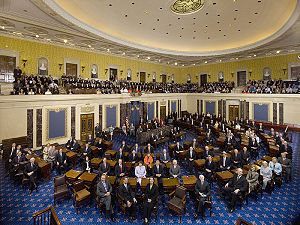
English: Placing honeybees for pumpkin pollination, Mohawk Valley, NY (Photo credit: Wikipedia)
The steadily increasing disappearance of honeybees since 2006 has farmers, beekeepers, scientists and government officials all abuzz, largely because of the impending economic disaster that would occur without bee pollination. This really is a major problem because “one-third of all food and beverages are made possible by pollination, mainly by honeybees. The agricultural industry attributes more than $20 billion of its worth to pollination.[1]
Currently, the USDA, scientists, beekeepers and growers are working frantically to identify the cause of death of bees or “colony collapse disorder” (CCD). It appears that there are several factors contributing to this problem, including the parasitic Varroa mite and pesticides. Researchers are very familiar with the Varroa mites, noting that they attach themselves to bees and feed off of their fluids, thereby weakening them. A potential solution posed for the mite problem is to breed bees that can withstand these mites. Recent research also has pointed to the adverse effects of neonicotinoids, a pesticide that has few adverse effects on mammals, but are shown to damage the brains of bees. Additional causes of CCD listed by the EPA and the USDA include “poor nutrition, reduced genetic diversity, the Nosema gut parasite, emerging viruses and a bacterial disease called European foulbrood“.[1]
It is interesting to examine the potential impact of the loss of honeybee pollination on our food supply. It it important to note the special and unique role of some pollinators in seed production, but not in the growth of the germinated seeds. The loss of these pollinators would trigger the disappearance of these seed, the very origin of these plant species. Some examples include carrots,onions, celery, mustard, broccoli, cauliflower, cabbage, Brussel sprouts, turnips, caraway, coriander, buckwheat, fennel, alfalfa, sesame and several variety of beans. Many of the fruits and vegetables that we eat require honeybee pollination and would be adversely affected by the loss of pollinators, resulting in increase cost due to shortages or even total lack of available crops. Imagine no strawberries, peppers (several varieties), apples, kiwifruit, watermelon, cantaloupes or squash, just to name a few. [2]
Now that we recognize the need to reduce our consumption of red meat and to increase the use of fresh fruits and vegetables in our diets for purposes of healthier lifestyles and environmental protection, it is a matter or urgency to address this threat to our food supply. We all can do something to help. For starters, we have to educate ourselves on the process of pollination. An excellent resource on this subject is the Pollinator Partnership at www.pollinator.org/html. This site has wonderful suggestions on planting fruits, vegetables and flowering plants that attract pollinators. Also, you can find information to get involved in the celebration of Pollinator Week 2013 coming up in June. [3] Secondly, keep in mind will not try to sell products that we refuse to buy. To that end, please make every effort to buy local and organic. These fruits and vegetables do not contain harmful pesticides that harm the soil, the air, water or pollinators, such as honeybees.
The pollination problem is a complex one that has several causes and will take time to solve. The relationship of honeybees to the earth is simple: Bees equal food. With that said, we have a duty to protect the honeybees. Our lives depend on it. To do so is to live green, be green.
_________________
Sources for this article:
[1] http://cosmiclog.nbcnews.com/_news/2013/05/02/18021285-pesticides-arent-the-biggest-factor-in-honeybee-die-off-epa-and-usda-say?lite
[2] http://en.wikipedia.org/wiki/List_of_crop_plants_pollinated_by_bees.
[3] http://www.pollinator.org/








